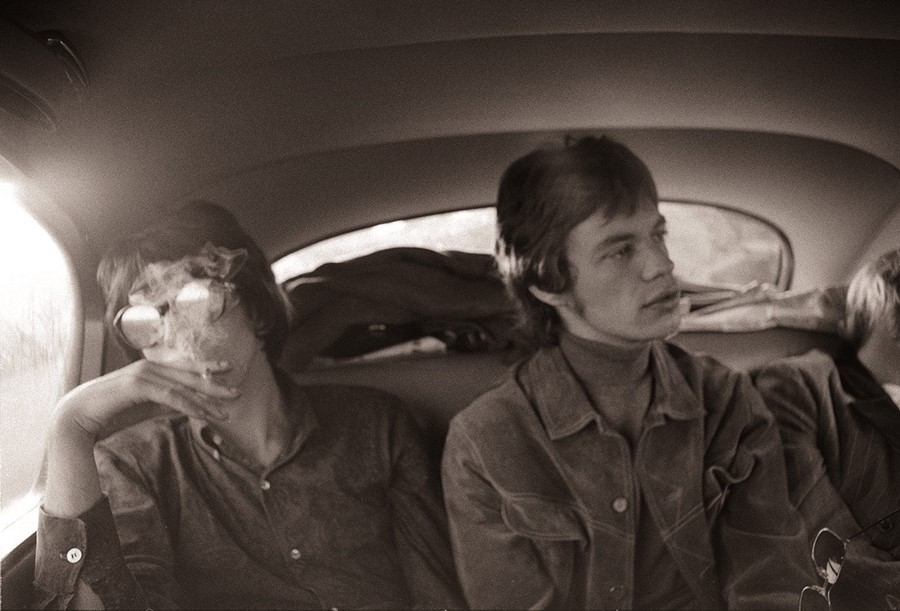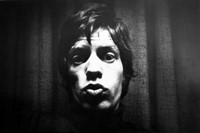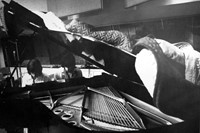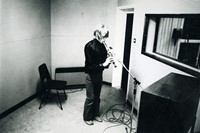The formative years of the Rolling Stones are laid bare in an intimate series of photographs by late British photographer Michael Cooper
Had British photographer Michael Cooper lived to see the 21st century, he would almost certainly have been a household name. Throughout the 1960s he sat firmly at the centre of the creative whirlwind sweeping London, rubbing shoulders with the brightest young musicians, artists and writers of the era. As it is, he died tragically young, taking his own life after a battle with depression in 1973. But what he left behind is a fantastic visual legacy in the form of the myriad photographs he captured – perhaps most notably, and certainly most extensively, those he took of his close friends, the Rolling Stones in their early heyday.
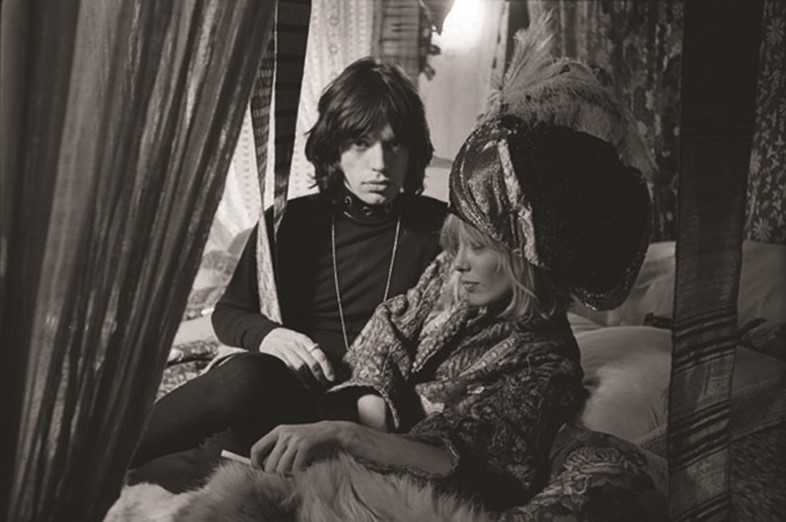
It was in 1964 that the image maker forged the connection that would launch his career, striking up a friendship with famously eccentric art dealer and gallery owner Robert Fraser – frequently, and rather amusingly referred to as ‘groovy Bob’, owing to his influential position among the cultural milieu of the time. Before long Cooper had been embraced into the fold as Fraser's unofficial, "in-house" photographer at his eponymous gallery in Duke Street, where the young aspirant soon became acquainted with the Stones, The Beatles, Marianne Faithfull, Andy Warhol, David Hockney, William S. Burroughs, Allen Ginsberg – and many more.
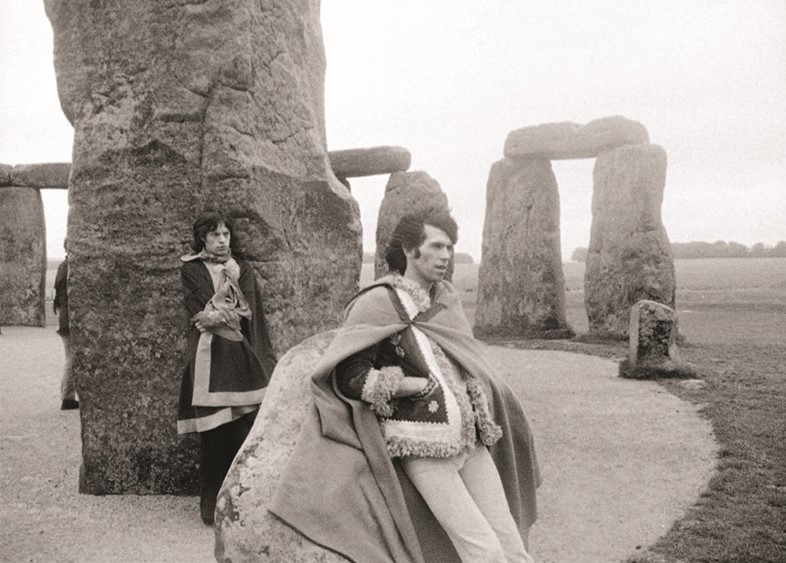
Propelled by an urgent need to document the extraordinary zeitgeist unfolding around him, Cooper travelled far and wide for the perfect photo opportunity, particularly where the Stones were involved. A close friend of Keith Richards', he accompanied the guitarist and co. to Ireland for surreal acid trips, to the California desert to look for UFOs, to Marrakesh on vacation and beyond. But in many ways the most remarkable of his pictures of the band were taken as they went about their daily life, both at work and at play, utterly unselfconscious in the presence of their shutterbug pal. As Adam Cooper – Cooper's son, and curator of a new exhibition of his father's Stones photographs at Proud Chelsea – explains, "The thing that always strikes me about Michael's images, above those of all other photographers, is their intimacy and honesty. Keith [Richards] often remarks on that, the way they capture the day-to-day life of a band in the making."
"Cooper was lay saint who hovered over the scene with a single-lens-reflex eye, invisibly ever-present." – Marianne Faithfull
Marianne Faithfull put her finger on this unique skill in her description of Cooper as a "lay saint [who] hovered over the scene with a single-lens-reflex eye, invisibly ever-present." Indeed, Cooper was very much averse to illuminated studio situations, preferring, in his son's words, "to get out there and shoot it for real" as it was happening. "He had an amazing ability to quietly move around and snap away, so many of his subjects didn't even know they were being photographed," Cooper Jr. says, "and this always made for the best shots – completely natural."
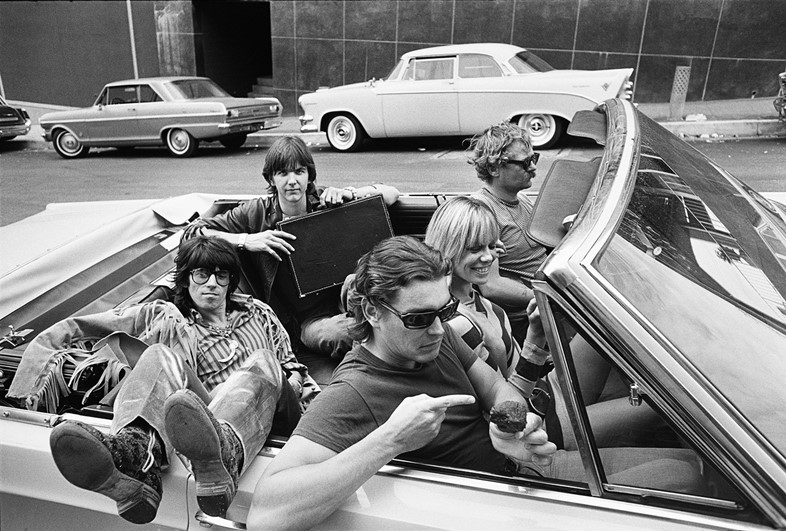
Cooper Jr., along with Proud's managing director Kate Boenigk, has selected some of the finest examples of his father's documentary style for the exhibition, named Courting the Stones in reference to Cooper Sr.'s honourary title of 'court photographer' to the band. Mick and Keith, wrapped in suitably pagan capes, stand broodingly propped against the ancient boulders of Stone Henge, deep in thought; Jagger, composing at a piano, gazes intently at his hands, seemingly unaware of his friend standing behind him to capture their portrait in the adjacent mirror; Richards sprawls luxuriously in the back of a convertible, brazenly smirking towards Cooper's lens.
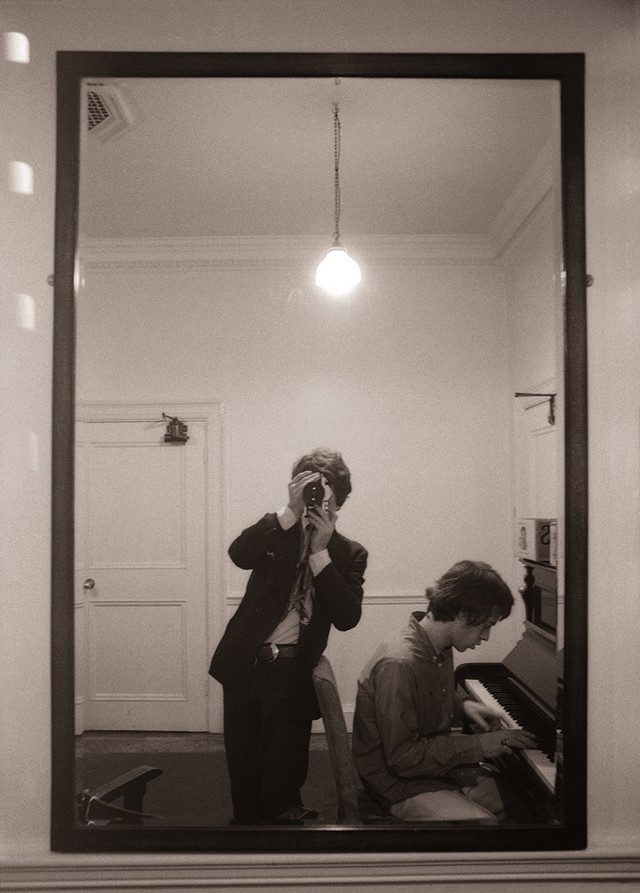
For the show, Cooper Jr. has, for the first time, opted to exhibit his father's original prints, hand-developed by the photographer at his Chelsea studio on near-by Flood Street (dubbed the 'Chelsea Set,' thanks to its reputation as a celebrity hotspot). "I have often been asked to display the vintage prints, but have always said no – more through fear of damage than anything else," Cooper Jr. explains. "But this exhibition at Proud Chelsea is very special to me, with lots of emotion and sentiment involved. After all this is the Kings Road, the epicenter of the whole 60s scene, so what more fitting time to display, for the first time ever, his beautiful original prints?"

Cooper, who was a young child during the seminal decade in which his father was photographing, looks back on the period as "a time of excitement, of promise and joy." And it's hardly surprising. He was there when his father shot the cover for the Beatles' Sgt. Pepper album, was presented with two signed guitar by Richards for his birthday (one of which the guitarist borrowed back to record Ruby Tuesday) and often found the Stones in his living room, "hanging out and getting creative." "It was only in my very early teens that it really sunk in as to the people I had grown up with," he recalls. "At the time it was very normal but now, here we are over 50 years later and they are still at the top of their game, still considered by many as the greatest rock 'n' roll band in the world." So what does Cooper hope that viewers will take away from the unique exhibit of his father's work? "It's a chance to step back in time to the 60s, to the historical content of it all, but most of all to view some of the most truthful and intimate photos of the Stones you are ever likely to see."
Courting the Stones opens today at Proud Chelsea and runs until November 22.
